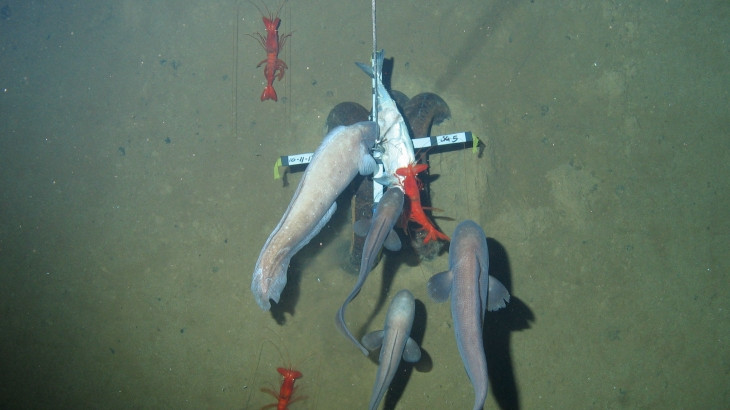Life in the Deep: Amazing Footage Shows Animals in Unexplored New Hebrides Trench

Extremely rare footage showing life more than seven kilometres beneath the surface of the ocean has been released by scientists.
Video showing animals living in the New Hebrides Trench in the South Pacific reveals the harsh conditions in which they live and how life is not as predictable as once thought.
The previously unexplored New Hebrides Trench lies east to the isle of New Caledonia, 1,000 miles north-west of New Zealand. Researchers discovered the marine life there was much sparser and less varied than they had expected.
Released by researchers at the University of Aberdeen and the National Institute of Water and Atmospheric Research in New Zealand, voyage leader Alan Jamieson said: "We set out to investigate whether the patterns of biodiversity in these medium depth trenches could be predicted by trends that we have observed in the really deep trenches that we've already studied elsewhere in the Pacific Rim.
"But what we found was an entirely different deepwater fish community. Fish were surprisingly few in number and low in diversity and not at all what we expected. The fish we would always expect to see, the grenadiers, were completely absent. The fish that dominated the area were a group called cusk eels which are far less conspicuous elsewhere.

"As well as the difference in biodiversity we also stumbled across another surprise - the area in and around the New Hebrides Trench was swarming with large bright red prawns which are typically seen in very low numbers in other areas."
The cameras and animal traps were set 27 times at depths of between two and seven kilometres in the trench. Researcher Thom Linley said: "The big difference between this trench, and others that we have studied, is that the New Hebrides Trench lies underneath tropical, and therefore less productive, waters.
"The waters over a trench are what 'feeds' the deep sea community and, in this case, it appears that the prawns and cusk eels are specialists in low food environments. This means the huge expanses of the deep Pacific Ocean that span the tropical regions are likely to be largely inhabited by the cusk eels and prawns rather than the more diverse communities we see around the Pacific Rim. If that is the case it also means that these animals are far more widespread than previously thought."
Jamieson said their findings were a "stark reminder" that even the deepest parts of the ocean are affected by what goes on at surface level, adding climate change will impact the marine life there.
"Should the current system change, it is highly likely to have significant cascading effects on the deep sea community. The deep sea is potentially a kind of silent victim in the era of a changing climate."
© Copyright IBTimes 2025. All rights reserved.






















